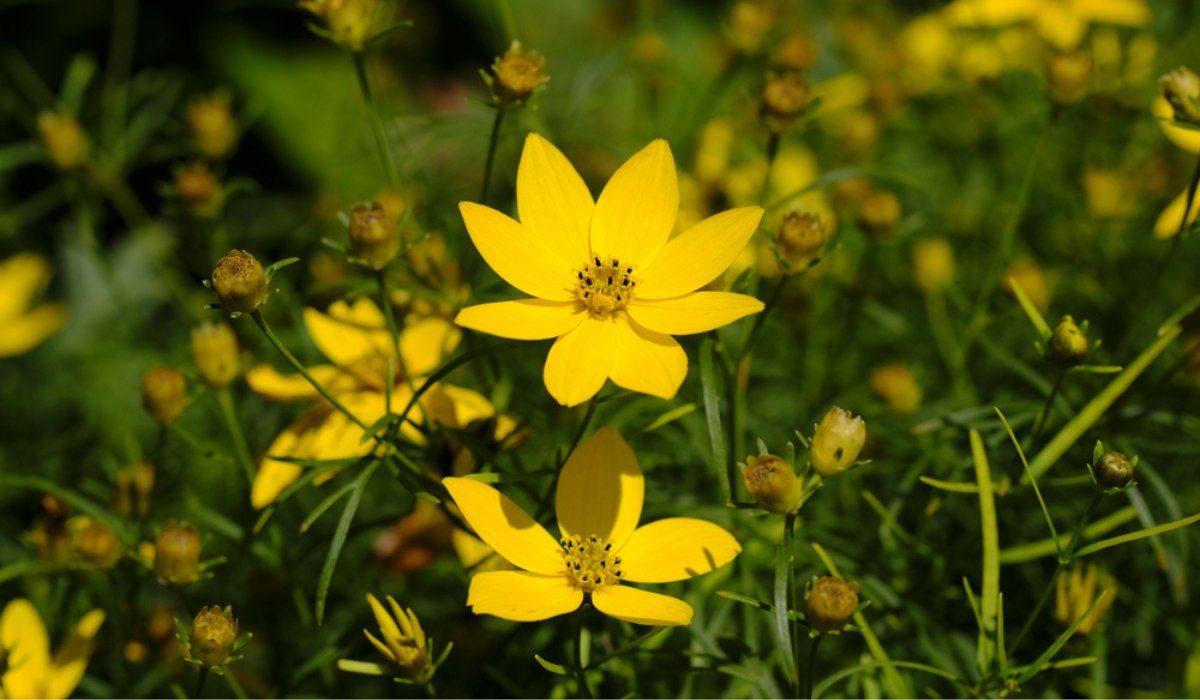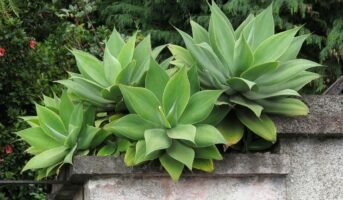
Source: Pinterest
Coreopsis, or Tickseed, is a genus of plants in the Asteraceae family. The genus includes more than 200 species of annuals and perennials native to North America, Central America, and South America.
Coreopsis can be found in fields and meadows throughout much of North America, from northern Canada to southern Mexico. The plant is also referred to as “bee balm,” “vegetable marigold,” or “blue bonnet.”
In its natural habitat, coreopsis is a short-lived perennial that grows from low, sprawling stems. The plant produces a lot of colourful flowers, some of which are lavender, yellow, blue, and white.
Coreopsis is a common plant that has been grown for centuries. It’s a tough, drought-tolerant plant with a long flowering season. Coreopsis is great for attracting bees, butterflies and hummingbirds. It also attracts pollinators to other plants in your garden.
See also: What is hibiscus and what are its many benefits?
Coreopsis: Quick facts
| Plant Name | Coreopsis |
| Common Name | Tickseed |
| Genus | Coreopsis |
| Kingdom | Plantae |
| Order | Asterales |
| Family | Asteraceae |
| Sub – Family | Asteroideae |
| Tribe | Coreopsideae |
| Life Cycle | Perennial |
| Mature Size | 2–4 ft. tall, 1-2 ft. wide |
| Cultivation | The Americas |
| Benefits | Ornamental plant |
Coreopsis: Physical description

Source: Pinterest
- A member of the sunflower family (Asteraceae), coreopsis is a perennial plant that grows up to 1 metre tall.
- It has large, feathery leaves that are covered with hair and have a distinctive smell when crushed.
- The flowers are borne in clusters at the top of the plant’s branches.
- The flowers contain no petals. Instead, they are yellow with red or brown spots on them.
What are the types of Coreopsis?
Some of the popular varieties of Coreopsis plants are:
- Coreopsis grandiflora: Large-Flowered Tickseed is a cultivar of Coreopsis plant with bright yellow flowers and grows in any soil type up to a height of 18 to 24 inches.
- Coreopsis lanceolata: Known as the Lanceleaf Coreopsis, this variety exhibits a wildflower look and grow in full sunlight.
- Coreopsis grandiflora ‘Heliot: The flowers of the this variety blooms from early summer up to frost.
- Coreopsis grandiflora ‘Rising Sun’: This variety of Coreopsis plant begins blooming weeks earlier compared to other varieties. The flowers are two inches in size, and quite large for the species.
- Coreopsis verticillata ‘Moonbeam’: This variety of Coreopsis plant blooms from midsummer up to the fall.
- Coreopsis verticillata ‘Golden Showers’: This plant variety is very tolerant to hot and dry weather.
- Coreopsis rosea: This variety is known as Pink Coreopsis, which is comparatively less tolerant to heat and drought.
- Coreopsis x ‘Limerock Ruby: This variety is referred to as Limerock Ruby that produces red flowers with orange centres.
Coreopsis: How to grow?

Source: Pinterest
- Get the soil ready by mixing three parts of well-drained potting soil with one part of sand or perlite. You can also use peat moss instead of sand if you prefer.
- Dig a hole in your garden that is twice as wide as the root ball of your new plant. Verify that the hole is free of any pebbles or other debris because it could damage your plant later on.
- Fill the hole with your prepared soil mixture, then place your flower pot inside until it reaches almost up to the rim of its container, which is about two inches.
- Water sufficiently for about 30 minutes before planting so that water penetrates through all cracks and crevices in the container’s bottom and sides onto both sides of its roots system. Do not allow any water to pool under any leaves. This would cause rot later on.
Coreopsis: Maintenance tips

Source: Pinterest
Growing coreopsis plants is simple. You need to provide them with a sunny spot and avoid over-watering and over-fertilizing. Coreopsis can also handle some shade if you want to keep it in the front yard or in an area that gets less sun, such as under an oak tree or between two shrubs. The best time to plant your coreopsis is when the soil is warm.
Since these plants are quite versatile, they make great additions to any garden. They’re suitable for both small spaces and large gardens alike, and they can grow up to four feet tall by themselves. Just be sure that you choose a location with ample sunlight because they won’t do well in shaded areas or containers.
Coreopsis: Uses

Source: Pinterest
- Coreopsis, with its bright yellow colour, is used to attract hummingbirds and honeybees when it blooms.
- It can also be used as a filler for flower arrangements or as a cut flower for bouquets.
- It is sometimes used as an ornamental in gardens, but it is poisonous to some animals such as pets and livestock if consumed.
- The coreopsis plant is native to the Americas and is often grown as a decorative flower. Small doses might be utilised for therapeutic purposes as well.
FAQs
Is Coreopsis a perennial or an annual plant?
There is perennial Coreopsis, which lives for more than a year, and annual Coreopsis, which live for only a single year.
What is the most suitable place to grow Coreopsis?
You should plant Coreopsis where they will receive at least 6 to 8 hours of sunlight per day, regardless of the type you are growing.
Is it a wise idea to cut back Coreopsis in the fall?
Once frost occurs, remove any dead leaves and debris from around perennial Coreopsis.
Is Coreopsis a spreading plant?
Coreopsis has wiry stems and requires full sun and well-drained soil to maintain its dense, deep-green foliage. It is expected that plants will spread between 18 and 24 inches wide as they mature.
Got any questions or point of view on our article? We would love to hear from you. Write to our Editor-in-Chief Jhumur Ghosh at [email protected]
Housing News Desk is the news desk of leading online real estate portal, Housing.com. Housing News Desk focuses on a variety of topics such as real estate laws, taxes, current news, property trends, home loans, rentals, décor, green homes, home improvement, etc. The main objective of the news desk, is to cover the real estate sector from the perspective of providing information that is useful to the end-user.
Facebook: https://www.facebook.com/housing.com/
Twitter: https://twitter.com/Housing
Email: [email protected]











